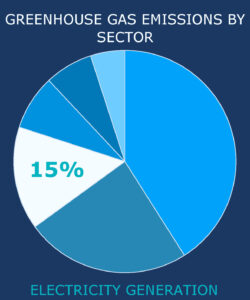Water use means energy use. The state pumps and treats water and consumers use water in energy-intensive ways, such as through water heating and pressurizing. The greenhouse gas emissions associated with water- related energy consumption total more than 100 million metric tons of carbon dioxide equivalent gases, while the burning of carbon-based fuels to power the state’s water infrastructure releases particulate matter that can cause asthma and other health effects. Conserving water therefore means conserving energy and limiting pollution.
